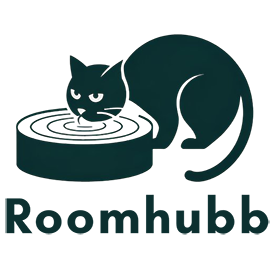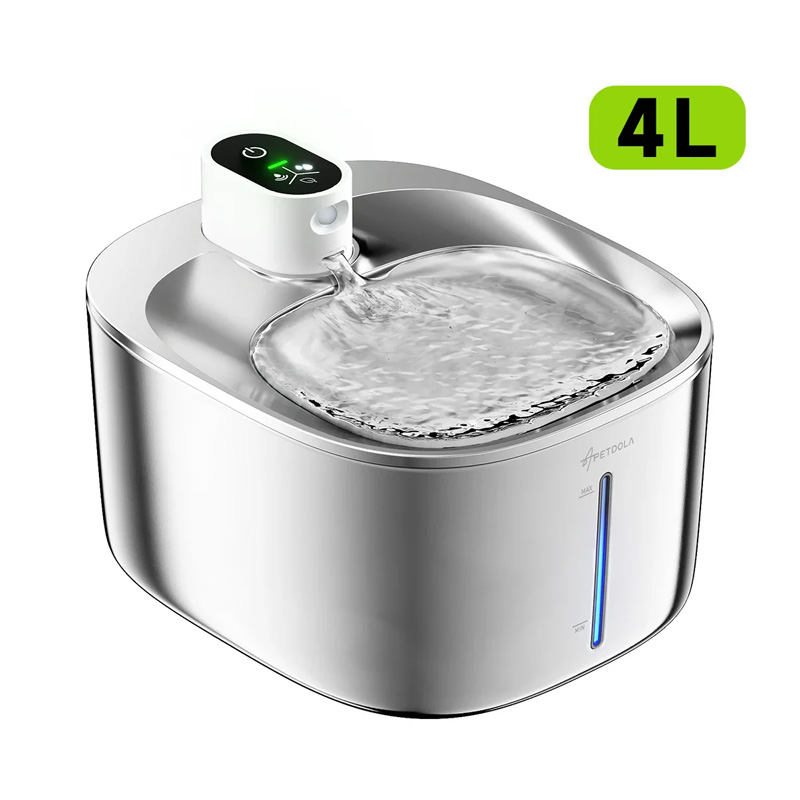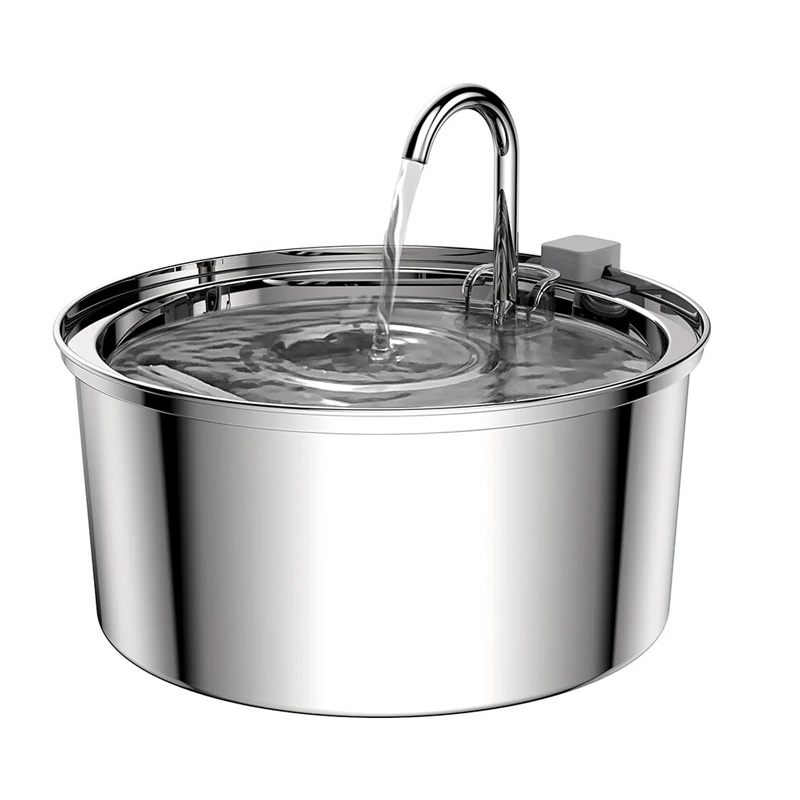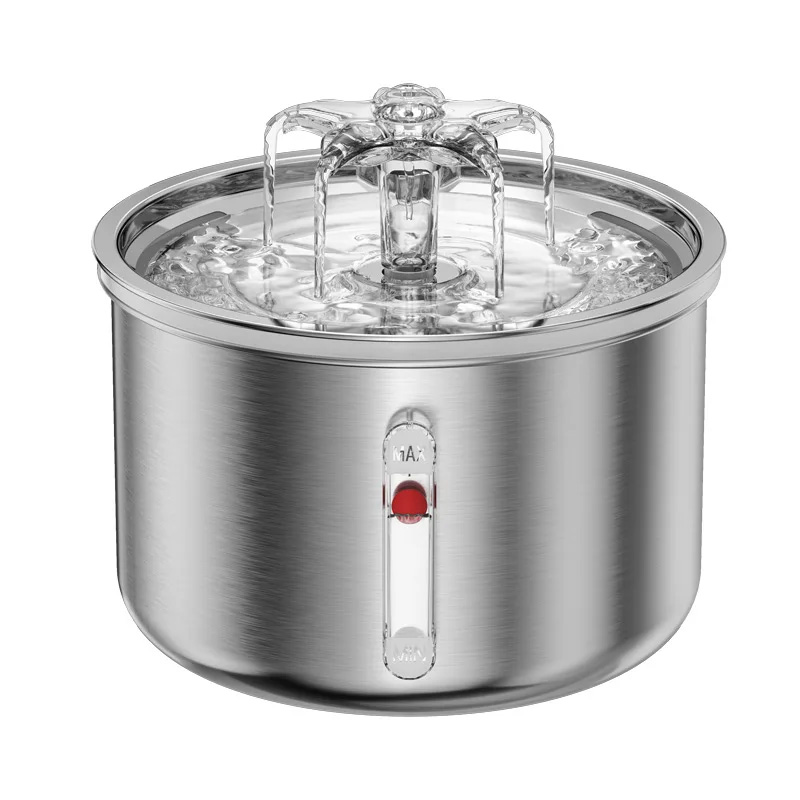Wiki Pet
Why do plastic water bowls for cats become slimy over time?
A common issue that many cat owners encounter is that the plastic water bowl becomes slimy after a period of use. This not only feels unhygienic but also poses potential health risks for your cat. So, what exactly causes this? Is there a way to prevent and completely eliminate it? Let’s analyze the details in the article below to better understand the issue.
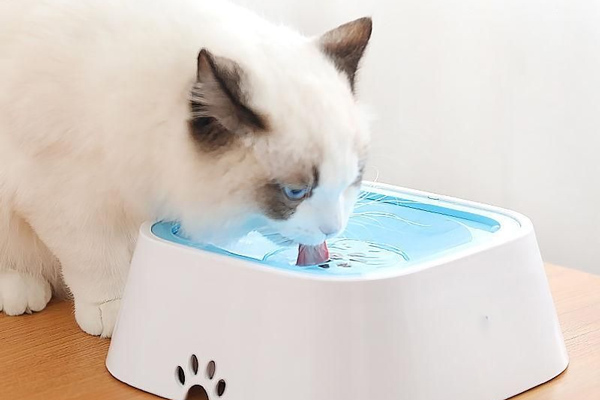
Slimy plastic bowls – not just a matter of dirt
After just one day of leaving a plastic bowl of water in your cat’s room, you might notice a slimy layer when you touch the inside of the bowl. This isn’t ordinary dust or dirt-it’s a thin, slippery, sometimes sticky biofilm. This is a warning sign that harmful bacteria or microorganisms are present in the environment.
You may also see a light layer of dust, some cat fur, human hair, or debris blown in by the wind floating on the water’s surface. These contaminants come into direct contact with the water your cat drinks daily.
Interestingly, clever cats might start avoiding the bowl entirely, seeking fresh water from the toilet or another recently filled source instead. Pay close attention-you might notice this behavior yourself!
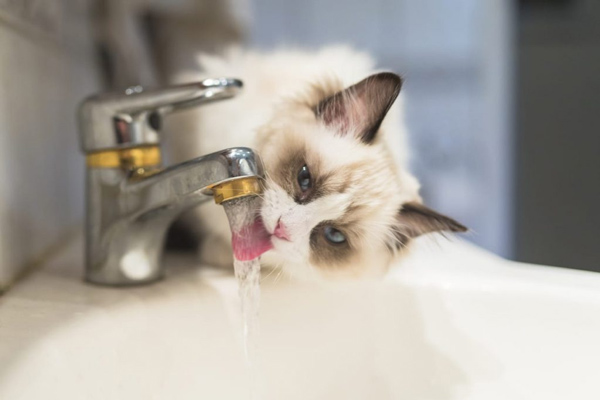
So, what causes this? Several factors contribute to the formation of this slimy layer, especially when using low-quality plastic or failing to clean the bowl properly.
5 causes of slimy buildup in plastic cat water bowls
Bacteria and microorganisms forming biofilm
One of the main causes is the formation of biofilm-a layer of bacteria, mold, and other microorganisms. When water is left standing, especially in warm environments or direct sunlight, these organisms multiply and cling to the bowl’s surface, creating a slimy film.
This is a natural process in moist environments containing organic matter-like cat saliva. The problem is that water left out too long turns from a fresh source into stagnant water your cat will likely avoid.
Cats instinctively prefer fresh, running water or recently refilled bowls. They tend to avoid old or contaminated water.
Plastic is prone to scratches, retains bacteria
Unlike stainless steel or ceramic, plastic scratches easily and retains residue. Tiny cracks that develop over time become perfect hiding spots for bacteria. These are hard to clean thoroughly with just water.
Worse still, some low-grade plastics may slowly degrade, releasing oily substances that feel slimy to the touch.
Another hidden concern is microplastics. By drinking from plastic bowls, cats may ingest tiny plastic particles. Over time, this can accelerate the aging process in their bodies.
Saliva and oils from cat fur
As your cat drinks, saliva and fur around its mouth come into contact with the water and bowl surface. Cat saliva contains enzymes and natural bacteria which, if not cleaned regularly, accumulate and form a slimy film.
Additionally, oils from your cat’s fur-though minimal-also contribute to a sticky water surface over time.
Not changing the water regularly
A common mistake among cat owners is leaving water in the bowl too long without refreshing it daily. Whether it’s tap water or purified water, after 24 hours it starts to collect dust, debris, and bacteria from the air or the cat itself. This accelerates the formation of biofilm.
Placing the bowl in a hot or contaminated area
The location of the bowl significantly affects bacterial growth. If placed in direct sunlight, near food, or next to the litter box, it creates an ideal environment for bacteria to thrive.
How to prevent and eliminate sliminess in plastic bowls
✅ Switch to safer, more durable materials
Opt for bowls made of 304 stainless steel, ceramic, or glass. These materials are less prone to scratches, don’t retain residue easily, and can be sterilized with hot water.
✅ Wash the bowl daily
Make it a habit to clean the water bowl daily using mild soap and warm water. A small brush can help reach corners and the bowl’s base.
✅ Change water 1-2 times per day
Even if there’s still water left, replace it with fresh water at least twice a day to avoid contamination from oil, dust, or bacteria buildup.
✅ Place the bowl in a cool, dry area
Avoid placing the bowl near the litter box or in direct sunlight. The ideal spot is a cool, quiet corner with minimal foot traffic so your cat feels comfortable drinking.
Conclusion
It’s completely understandable that a plastic water bowl for cats becomes slimy over time once you know the underlying causes. The good news is that this is entirely preventable with proper hygiene, a better choice of materials, and regular water replacement.
Remember: your cat’s health depends greatly on the small daily details that we sometimes overlook.
